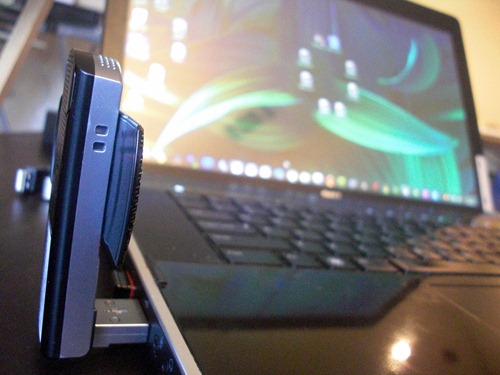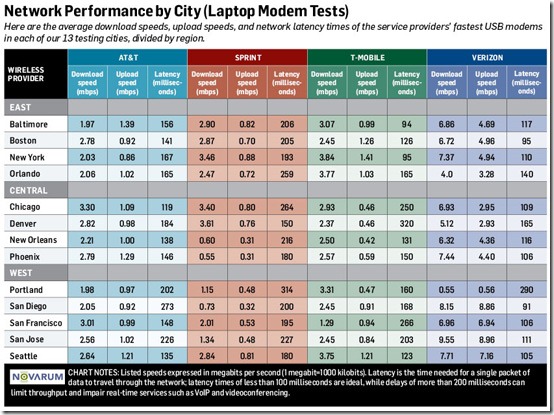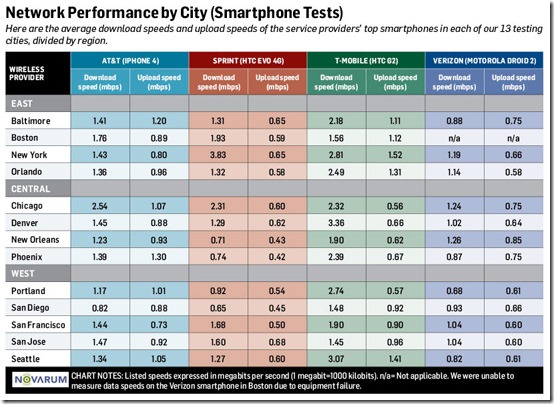
Since last year, Verizon mobile broadband speeds have increased by 634%. Here’s the kicker, Verizon 4G LTE (and every other carrier for that matter) isn’t technically 4G:
Like mobile broadband, the definition of 4G changes based on who you ask.
The International Telecommunications Union Radiocommunication Sector (ITU-R, say that three times fast), defines 4G as “a cellular system that must have target peak data rates of up to approximately 100 Mbps for a high mobility connection (read: mobile broadband) and 1 Gbps for low mobility (think: wireless Clear 4G modems that don’t move too much).
With that being said, no U.S. provider offers true 4G service.
With that being said, Verizon 4G LTE is the closest thing to those kinds of speeds currently available. If any carrier deserves the 4G title, it would be VZW.
Verizon advertises average download speeds of 5-12 Mbps downloading and 2-5 Mbps uploading. That’s enough to give cable and DSL providers a run for their money (literally). On top of that, it’s about 10 times faster than 3G speed.
What Kind Of 4G Speeds Will You Actually Get?

I had the opportunity to review the Verizon UML290, an LTE broadband card, to see the kind of 4G speeds I could get in Atlanta, GA.
I got ridiculously fast speeds up to 20.29 Mb/s and upload speeds up to 8.43 Mbps. See the video below:


While these speeds are insanely fast and higher than advertised, its important to note that not many people are using Verizon’s 4G network just yet.
Like cable internet, you’ve got to see the kind of speeds you’ll really get when you come home from work and everyone else is trying to use it at the same time as yourself.
To get an idea of what those kinds of speeds may be, you may want to take a look at 4G speed tests conducted in your city.
Laptop & Smartphone 4G Speeds By City
The charts below list the cities in the leftmost column; moving rightward across the chart, you can see the speed averages and network latency times for each of the four wireless networks.
Speeds are expressed in megabits per second (mbps). Latency (or the time it takes a single small packet of data to travel to a network server and back) is represented in milliseconds. We recorded download and upload speeds and latency times during our laptop-modem tests, and download and upload speeds in our smartphone tests.
– PCWorld.com
When it comes to Verizon 4G speeds, its important to note that the city-by-city tests weren’t chosen based on where 4G was available. Rather, they were selected to be consistent with previous tests.
As a result, not all cities tested had 4G speeds. When 4G was not available, 3G speeds were tested.
Use the charts below as a 4G speed reference guide only if Verizon 4G LTE coverage was available in the city tested.
Clicking on the images below will take you to PCWorld’s enlarged versions.

Note that Verizon’s smartphone performance is clearly not 4G. That’s because the Motorola Droid 2 used for testing isn’t a 4G phone.
Bottom-Line on Verizon 4G Speeds
Verizon’s 4G LTE network is the fastest mobile broadband network hands-down. Even with increased load, it still outperforms AT&T, Sprint & T-Mobile.
They may very well be changing their slogan to “America’s fastest and most reliable network”.
Next, Verizon 4G Coverage
Although Verizon launched their 4G network in December 2010, they already cover some of the largest cities in the U.S. with many more on the way to come.
Plans are underway to cover 200 million people by the end of 2011 (almost the size of their current 3G network) and the entire nation with more 4G coverage than 3G coverage by the end of 2013.
Also part of this 2011 review:


Network Services Atlanta says:
Hey! This post could not be written any better! Reading this post reminds me of my good old room mate!
He always kept chatting about this. I will forward this article
to him. Fairly certain he will have a good read. Thanks
for sharing!